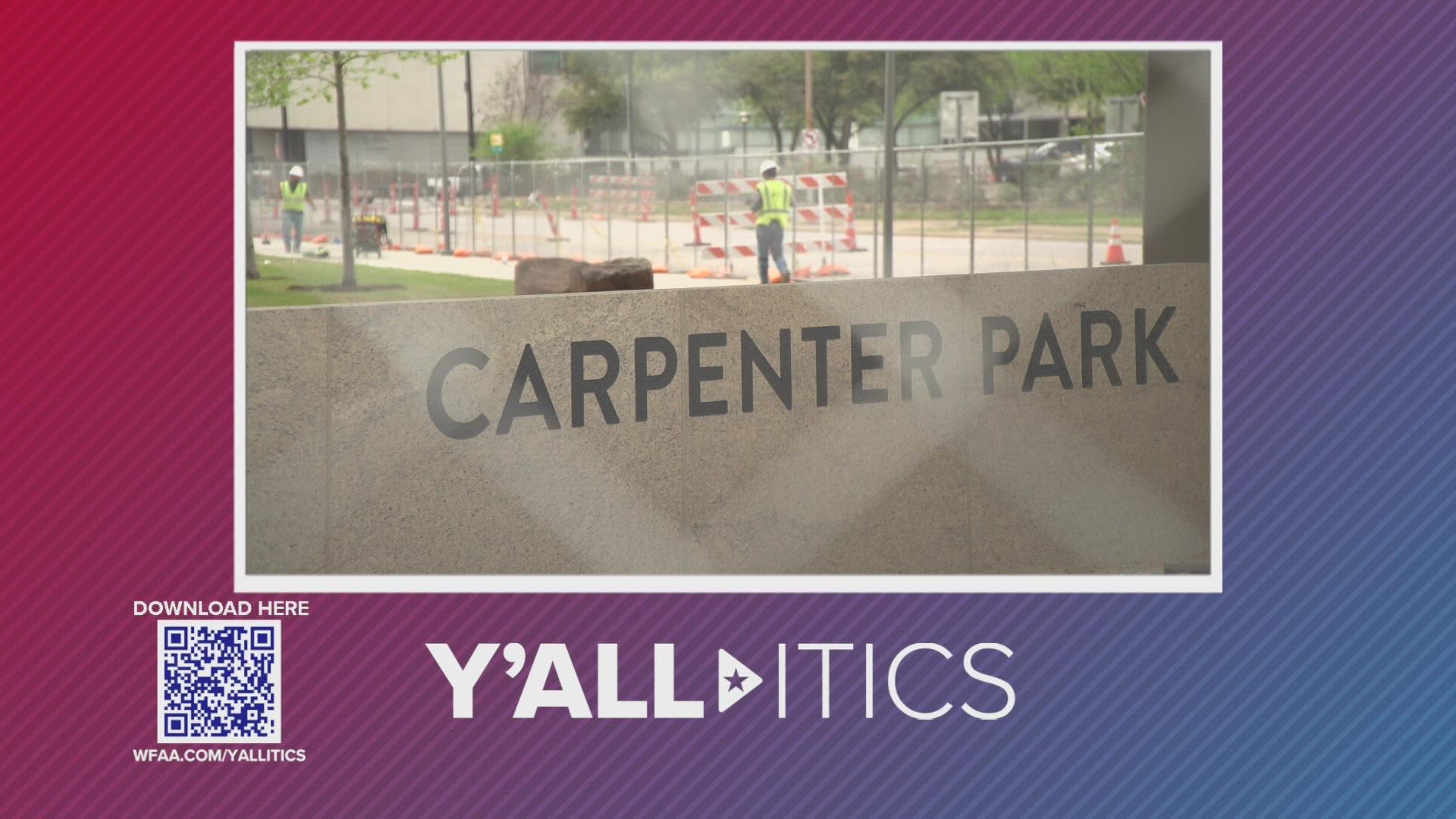DALLAS — Downtown Dallas has added 20-plus acres of green space over the past 20 years, leading to an urban renewal even a pandemic couldn’t slow down.
And the group behind the greening of Dallas told WFAA that no other downtown in the country can boast about turning as many parking lots into parks during that time period.
It’s not only great for business, luring companies and people to Downtown Dallas, but it also helps improve the quality of life in the area, whether that be physical, mental or environmental.
“I think you all know that Dallas has air quality issues, and so this is one of the things about removing concrete and adding green is very helpful for a city,” Amy Meadows said on Y’all-itics. “One of the early impetus for this was the walkability of Downtown Dallas. Downtown was not known as a city where people walked. They drove in, went to their offices and might have used the tunnel so you didn't even see them on the streets.”
Amy Meadows is the CEO of Parks for Downtown Dallas, the nonprofit not only building the parks, but also helping raise funds for an endowment to maintain those spaces in the future. In fact, the organization has a goal to raise $50 million in endowment funding to help supplement the City’s Parks Department maintenance budget to help with upkeep.
The plan to create a community of urban parks includes four priority parks in Downtown Dallas: West End Square, Pacific Plaza, Harwood Park and Carpenter Park, the last of which just opened.
At 5.6 acres, Carpenter is the largest park in Downtown Dallas. It also might be one of the city’s best-kept secrets.
“If you don't come into the east side of downtown, you probably don't even know this was happening. And because of COVID, Texas did not stop construction. We just kept going,” said Meadows. “We broke ground on this park in September of 2020. We had a very tiny groundbreaking because we were, obviously, in the middle of COVID at the time, so I'm not sure most people really knew this was underway.”
Part of Carpenter Park is located under I-345, the elevated freeway that separates Downtown Dallas and Deep Ellum. And Meadows says that will provide all important shade.
The Y’all-itics team was also stunned to learn that Carpenter Park is home to Downtown Dallas’ first-ever public basketball court.
“Well, there are basketball courts in the neighborhoods that surround downtown, but not in downtown -- so, this is why I think, you know, it was a big deal,” Meadows said, emphasizing its importance.
The park building project began years ago. Meadows said they actually started buying the land in 2014 after realizing what was happening downtown with the rising cost of land.
“We saw the demand that was happening in the real estate market here, and we thought by the time the Park Department finally gets this approved for, you know, in the next bond program, which was slated to happen in 2017,” Meadows explained. “This land would be probably out of the realm of possibility in terms of purchase price.”
And it turned out to be a savvy business move. It took four years for her organization to buy all of the land for the parks. And then they sold that property to the city last year at appraised value. And the money saved has gone back into construction.
“These parks are designed and built, basically, for 100 years. So, we've used top materials, like granite for instance, instead of soft stone that will degrade over time,” said Meadows.
And what do you know? The greener and more livable Downtown Dallas has become, the more people have moved there.
Meadows told WFAA that there were only around 200 people living downtown in the late 1990s. That number has now ballooned to around 14,000, with more housing under construction. And that means more tax revenue for the entire city.
“As we improve the infrastructure here in downtown and all the development that's coming in, the tax base is increasing,” said Meadows. “And those tax revenues are not being funneled directly back into downtown, they go into the entire city of Dallas. So, it's a win, too, to have a strong core for the entire city.”

